
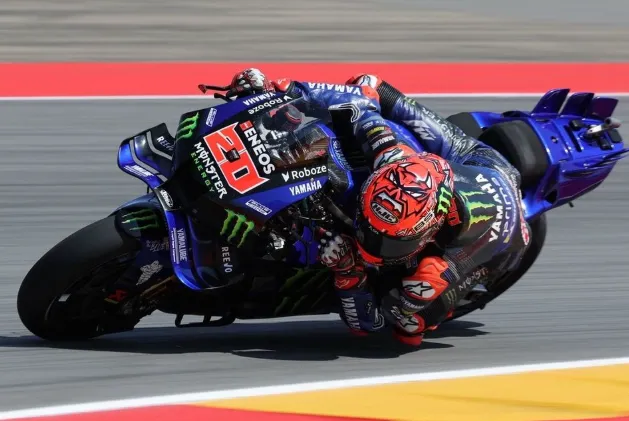
Quartararo Gets Angry After a Bad Day in Aragon: Yamaha Confused About the Source of the Problem
Fabio Quartararo, the former MotoGP World Champion and Yamaha’s premier rider, faced an unexpectedly rough day at the Aragon Grand Prix. The usually confident Frenchman was visibly frustrated after ending the practice sessions far outside the top 10, with a final standing of 18th place—an unusual sight for someone so accustomed to leading the timesheets.
In a season where Quartararo has been pushing to return to top form, the Aragon GP practice delivered a harsh reality check. After registering 11th in FP1, the Yamaha star dropped even further in FP2, triggering concern and confusion within his team. The sharp drop-off wasn’t just a fluke—it exposed deeper issues with the Yamaha M1, specifically regarding its electronic systems and tire behavior.
Yamaha’s Electronics Problem: The Invisible Enemy
Following his frustrating run, Fabio Quartararo did not hold back in expressing his discontent with the Yamaha M1. In an uncharacteristically candid post-practice interview, he commented:
“We almost did the pole position backward… It was a really tough day, especially with the soft tire, we don’t understand what’s happening with the electronics and all that. It wasn’t the best day, and most importantly, we don’t understand why.”
The Yamaha rider pointed to mysterious electronic inconsistencies as a major culprit. According to Quartararo, the bike’s unpredictability under acceleration and braking made it dangerous to push at full speed. The M1’s electronics package, already known to be less sophisticated than that of Ducati and Aprilia, appears to have hit a new low in Aragon.
For a team that prides itself on engineering excellence, Yamaha’s inability to pinpoint the issue after multiple sessions is worrying. Even more alarming is the admission from within the garage that nobody fully understands what’s going wrong—a rare moment of transparency that fans and critics alike find troubling.

Soft Tire Struggles: Yamaha’s Setup Woes Continue
Another key aspect of Quartararo’s difficult day was the failure to adapt the M1 to the soft rear tire compound. Traditionally, Yamaha has struggled with rear grip compared to its rivals. But in Aragon, that weakness became an outright liability.
All Yamaha riders, including Alex Rins and Cal Crutchlow, were visibly uncomfortable on the soft tire. Quartararo couldn’t extract the grip he needed, especially in sectors requiring heavy traction. Despite being known for his aggressive, precise style, he found himself riding conservatively just to stay upright.
“I didn’t want to take risks and crash just for the sake of trying to get into Q2,” Quartararo admitted.
The comment underlines the mental battle taking place: push and risk a crash, or hold back and hope to fix the bike overnight. For a rider still chasing podiums and a return to championship contention, that’s a bitter pill to swallow.
Is the M1 Reaching Its Development Limit?
The events at Aragon have reopened an uncomfortable conversation: Has Yamaha’s M1 platform reached its ceiling? Once the gold standard of balance and rideability, the M1 is now showing signs of serious age, particularly against the technologically superior Ducati Desmosedici and the ever-improving Aprilia RS-GP.
While Yamaha continues to lag behind in ride-height devices, aero efficiency, and torque delivery, its main Achilles heel appears to be its inconsistent behavior across different tracks. What works at Misano or Assen may completely fall apart at Aragon or Red Bull Ring.
Aragon, with its mix of long straights, sweeping corners, and technical braking zones, is a true test of bike balance. Unfortunately for Quartararo, the M1 failed that test spectacularly. Yamaha’s inability to react effectively in real time only deepens concerns about the team’s overall development trajectory.
Frustration Boils Over: Quartararo’s Body Language Speaks Volumes
If Quartararo’s quotes hinted at trouble, his body language in the pit box told the full story. Cameras captured him slamming his gloves onto the bench and gesturing with exasperation toward his crew. It was clear: he’s fed up.
Unlike some riders who mask disappointment, Quartararo is not afraid to show emotion, especially when he believes the team should be doing better. His visible frustration is not just about one bad day—it’s about a growing trend of missed opportunities and declining competitiveness.
While Quartararo stopped short of blaming the engineers directly, his tone suggests a lack of confidence in the current technical direction. “We’ll try to understand it overnight,” he said. But with so little progress made during the sessions, that sounds more like wishful thinking than a concrete plan.
A Team in Crisis Mode: Yamaha’s Search for Answers
Back in the Yamaha garage, the mood was tense. Engineers and data analysts scrambled through telemetry, desperately looking for clues. Was it a sensor glitch? A mapping issue? A mechanical imbalance? The lack of a clear diagnosis only heightened the sense of urgency.
Team director Massimo Meregalli acknowledged the problems but stopped short of offering a solution. “We know something is off with the electronics,” he said, “but we’re not sure what caused the loss of performance in FP2.”
This vague diagnosis only fuels speculation about deeper organizational issues. Is Yamaha’s MotoGP structure too conservative? Have they fallen behind in talent acquisition and R&D? These are uncomfortable but necessary questions as the team watches their lead rider slide into midfield oblivion.
What This Means for the Weekend and the Season Ahead
With Quartararo now forced to go through Q1, the road to redemption in Aragon looks treacherous. Historically, very few riders make it from Q1 to the front row, and even fewer manage a podium finish from there. And unless Yamaha unlocks something overnight, it’s hard to see Fabio battling the likes of Bagnaia, Martin, or even Binder come race day.
But the broader concern isn’t just this weekend—it’s the remainder of the season. Quartararo entered Aragon hoping to build momentum, but instead finds himself sliding backward. A few more weekends like this, and 2025 will go down as another wasted year in Quartararo’s prime.
Fans React: From Concern to Outrage
The MotoGP fanbase, especially the “El Diablo” faithful, reacted swiftly on social media. Some expressed sympathy, praising Quartararo for his honesty and courage. Others directed blame squarely at Yamaha’s technical staff, demanding a shake-up before more damage is done.
“Fabio deserves better,” read one widely shared tweet. “You don’t win championships with a bike that doesn’t listen to the throttle.”
The situation also raises concerns about Quartararo’s long-term future with Yamaha. While he has repeatedly stated his commitment to the team, his patience is clearly being tested. If the problems continue, could a switch to KTM or Aprilia be on the horizon for 2026?

Final Thoughts: Will Quartararo Rise or Continue to Fall?
The drama unfolding in Aragon has transformed what was supposed to be a routine practice session into a defining moment in Yamaha’s 2025 campaign. With the championship slipping out of reach, the priority now shifts to solving technical problems, restoring rider confidence, and salvaging some pride in the remaining races.
Fabio Quartararo, once the golden child of Yamaha’s project, now finds himself at a crossroads. His talent is undeniable, but even the best riders need the right tools. Whether Yamaha can provide those tools—or whether Quartararo eventually seeks them elsewhere—remains to be seen.
One thing is certain: MotoGP fans will be watching closely as the Aragon weekend continues. And if the team doesn’t act fast, they might lose more than just positions on the grid—they could lose the heart and soul of their racing future.
Stay tuned for more updates as the Aragon Grand Prix continues to unfold, with all eyes on Quartararo’s response and Yamaha’s attempt at damage control.

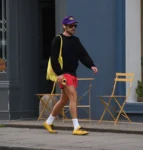

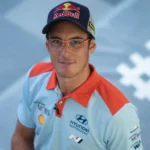




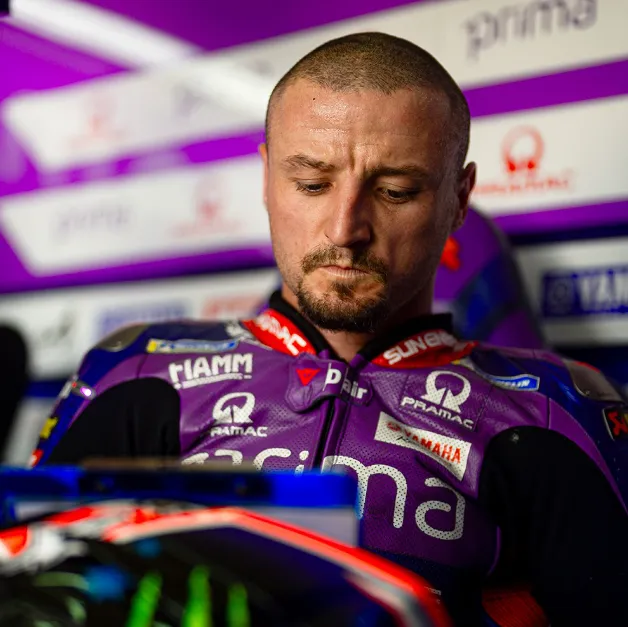

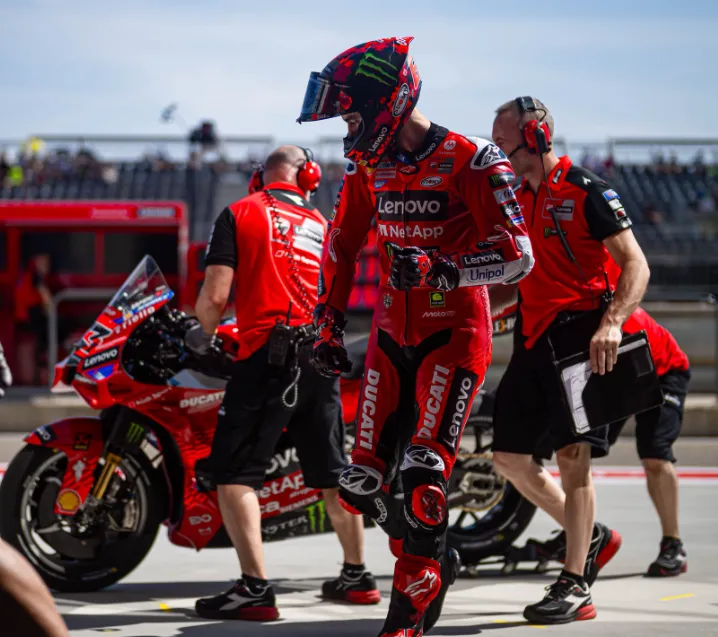








Post Comment